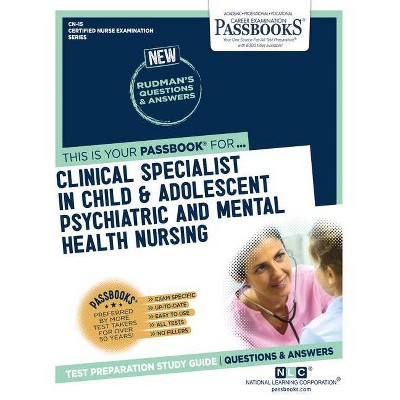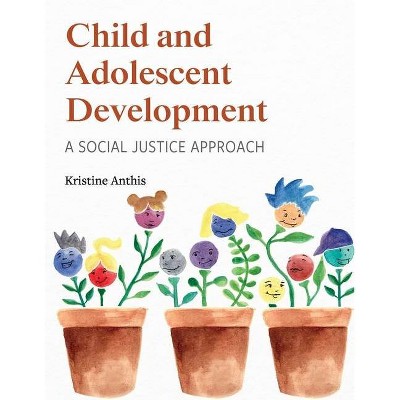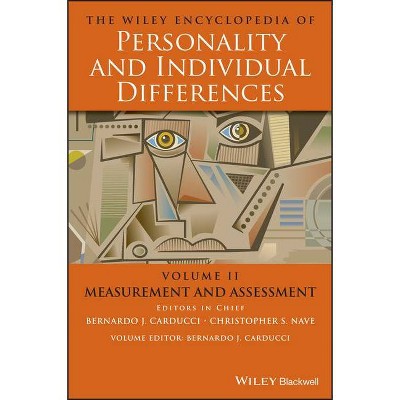Clinical Assessment of Child and Adolescent Personality and Behavior - 4th Edition by Paul J Frick & Christopher T Barry & Randy W Kamphaus

Similar Products
Products of same category from the store
AllProduct info
<p/><br></br><p><b> About the Book </b></p></br></br><p>As the knowledge base of child clinical and pediatric assessment continues to grow rapidly, so does the need for up-to-date information. This volume provides the ideal update and the text offers the depth of coverage necessary to understand the field.</p><p/><br></br><p><b> Book Synopsis </b></p></br></br><p>Psychologists offer an increasing variety of services to the public. Among these services, psychological assessment of personality and behavior continues to be a central activity. One main reason is that other mental health professionals often do not possess a high level of competence in this area. And when dealing with children and adolescents, psychological assessment seems to take on an even greater role. Therefore, it follows that comprehensive graduate-level instruction in assessment should be a high priority for educators of psychologists who will work with these youth. </p> <p>This textbook is organized into three sections, consistent with the authors' approach to teaching. Part I provides students with the psychological knowledge base necessary for modern assessment practice, including historical perspectives, measurement science, child psychopathology, ethical, legal, and cultural issues, and the basics of beginning the assessment process. Part II gives students a broad review of the specific assessment methods used by psychologists, accompanied by specific advice regarding the usage and strengths and weaknesses of each method. In Part III, we help students perform some of the most sophisticated of assessment practices: integrating and communicating assessment results and infusing assessment practice with knowledge of child development and psychopathology to assess some of the most common types of behavioral and emotional disorders in youth.</p> <p>A text focusing on assessment practices must be updated every four to six years to keep pace with advances in test development. For example, several of the major tests reviewed in the text, such as the Behavioral Assessment System for Children and the Child Behavior Checklist, have undergone major revisions since the publication of the last edition making the current content outdated. Further, another major test, the Conners' Rating Scales, is undergoing substantial revisions that should be completed before publication of the next edition. Finally, the evidence for the validity of the tests and the recommendations for their appropriate use evolve as research accumulates and requires frequent updating to remain current. For example, there was a special issue of the Journal of Clinical Child and Adolescent Psychology published focusing on evidenced-based assessment of the major forms of childhood psychopathology that will need to be integrated into the chapters in Part 3. </p> <p>This latter point reflects an important trend in the field that should influence the marketing of the book. That is, there are several initiatives being started in all of the major areas of applied psychology (e.g., school, clinical, and counseling) to promote evidenced-based assessment practices. These initiatives have all emphasized the need to enhance the training of graduate students in this approach to assessment. This has been the orientation of this textbook from its first edition: that is, Clinical Assessment of Child and Adolescent Personality and Behavior has focused on using research to guide all recommendations for practice. The ability of the textbook to meet this training need should be an important focus of marketing the book to training programs across all areas of applied psychology. </p><p/><br></br><p><b> From the Back Cover </b></p></br></br><p>The fourth edition of this textbook offers a scientific and practical context within which to understand and conduct clinical assessments of children's and adolescent's personality and behavior. The new edition ensures that the content is relevant to diagnostic criteria for major forms of child and adolescent psychopathology in the 5th edition of the Diagnostic and Statistical Manual of Mental Disorders (DSM-5). It provides updated information on specific tests and discusses advances in research that have occurred since the last edition that are relevant for assessing the most common forms of psychopathology shown by children and adolescents. The volume is unique in providing both the scientific and ethical basis to guide psychological testing, as well as providing practical advice for using specific tests and assessing specific forms of psychopathology. </p><p>This new edition: </p><p></p><ul><li>Highlights how current trends in psychological classification, such as the DSM-5 and the Research Domain Criteria, should influence the clinical assessment of children and adolescents.</li><li>Provides updates to professional standards that should guide test users.</li><li>Discusses practical considerations in planning and conducting clinical assessments. </li><li>Evaluates the most recent editions of common tests used in the clinical assessment of child and adolescent personality and behavior.</li><li>Provides an overview of how to screen for early signs of emotional and behavioral risk for mental problems in children and adolescents. </li><li>Discusses practical methods for integrating assessment information collecting as part of a clinical assessment.</li><li>Uses current research to guide clinical assessments of children with Attention-deficit/Hyperactivity Disorder, conduct problems, depression, anxiety, and autism spectrum disorder.</li></ul><p></p><p><i>Clinical Assessment of Child and Adolescent Personality and Behavior </i>is a valuable updated resource for graduate students as well as veteran and beginning clinicians across disciplines, including school, clinical child, developmental, and educational psychology; psychiatry; counseling; and social work; as well as related disciplines that provide mental health and educational services to children and adolescents.</p><p/><br></br><p><b> About the Author </b></p></br></br><p></p><p><b>Paul J. Frick, Ph.D., </b> is the Roy Crumpler Memorial Chair in the Department of Psychology at the Louisiana State University and professor in the Learning Science Institute of Australia at Australian Catholic University. Dr. Frick has published more than 250 manuscripts in either edited books or peer-reviewed publications, and he is the author of 6 additional books and test manuals. Dr. Frick is currently the editor of the <i>Journal of Abnormal Child Psychology, </i>the official journal of the International Society for Research on Child and Adolescent Psychopathology. He was the editor of the <i>Journal of Clinical Child and Adolescent Psychology</i> (2007-2011), the official journal of Division 53 of the American Psychological Association, which is the Society of Clinical Child and Adolescent Psychology, and he was a member of the American Psychiatric Association's DSM-5 Workgroup for ADHD and the Disruptive Behavior Disorders (2007-2012). Dr. Frick has been involved in the clinical training of doctoral students since 1990.</p> <p><b>Christopher T. Barry, Ph.D., </b>is a Professor in the Department of Psychology at Washington State University. Dr. Barry has published more than 70 manuscripts either in edited books or peer-reviewed publications, and he is an author or co-editor of 3 additional books. He is an assistant editor of <i>the</i> <i>Journal of </i>Adolescence</i><i> </i>and an associate editor of the <i>Journal of Child and Family Studies</i>. Dr. Barry<i> </i>has been involved in the clinical training of doctoral students since 2004.</p> <p><b>Randy W. Kamphaus, Ph.D., </b>is Professor and Dean of the College of Education at the University of Oregon. Dr. Kamphaus's research has focused on the development of methods and measures aimed at enabling new forms of practice in school and clinical child psychology practice. His recent efforts, in collaboration with former students and postdoctoral trainees, involves the creation of mental health risk screening measures and associated group-delivered social, behavioral, and emotional skill building lessons for use at school. He has published more than 10 tests, 85 journal articles, 10 books, 50 book chapters, and other publications. His research has been funded by grant mechanisms of the U.S. Department of Education for the past two decades. Dr. Kamphaus has served as past-president of the Division of School Psychology of the American Psychological Association and as editor of the Division's official journal, <i>School Psychology Quarterly</i>.</p><br><p></p>
Price History
Cheapest price in the interval: 149.99 on November 8, 2021
Most expensive price in the interval: 149.99 on December 20, 2021
Price Archive shows prices from various stores, lets you see history and find the cheapest. There is no actual sale on the website. For all support, inquiry and suggestion messagescommunication@pricearchive.us




















